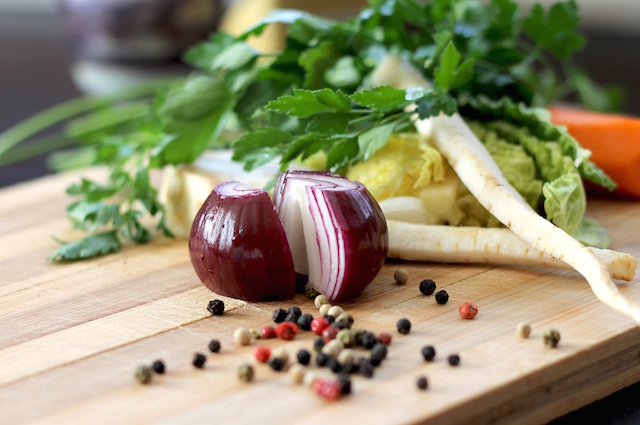
**Editor’s Note: This website is not designed to, and should not be construed to, provide medical advice, professional diagnosis, opinion or treatment to you or any other individual, and is not intended as a substitute for medical or professional care and treatment. Always consult a health professional about health care changes before trying out new home therapies or changing your diet.**
~
Winter is the season that corresponds to the water element in the Asian worldview. It is the season of deep yin and cold, and a time to conserve energy as life slows down.
Winter is the season of going within, quiet time and observing one’s dreams during this phase of deep rest. Winter is the season where the kidneys and bladder are particularly vulnerable. The water element governs the Kidneys and Bladder, and corresponds to fear and willpower, as well as the bones, teeth, hair on the head, ears, knees and sexual vitality.
During this time, going to bed earlier and rising later keeps us in tune with nature’s rhythm. Be sure to stretch cold tight muscles before rising rather than springing out of bed.
In winter, it makes sense to use more warming, concentrated foods. Include more dark orange colored vegetables, such as sweet potatoes, winter squash and carrots. Eat grounding roots like burdock, onions, rutabagas and turnips. Other warming foods include sprouted grains, arugula, mustard greens and watercress.
In addition, nuts and seeds make excellent protein-rich snacks. Consuming more nuts, nut butters and dried fruit in the winter helps increase resistance to cold. Getting adequate fats like those in olive oil, avocados and nuts and seeds helps treat dry skin and scalp, which is prevalent when heat is used in the homes.
Avoid drinking icy cold drinks, and if consuming food from the refrigerator, take the item out and allow it to get to room temperature before eating.
The flavor associated with winter is salty, and rather than relying on simple table salt, learn to enjoy mineral-rich seaweeds such as kelp, nori, hiziki, and dulse, which can be used to season food. Due to their rich mineral content, salty foods can help build kidney life force. Consider switching to Celtic or Himalayan salt, which have not had their minerals removed. Black sesame seeds also make a wonderful warming winter condiment when sprinkled on food.
Culinary herbs that make us feel warmer and improve circulation include:
Black pepper (Piper nigrum), a member of the Piperaceae (Pepper) Family. It has antiseptic and antioxidant properties.
Cardamom (Elettaria cardamomum), a member of the Zingiberaceae (Ginger) Family. It improves mental alertness and enhances the digestibility of starches. It is an expectorant, helping one to get rid of mucus obstructing the respiratory passages.
Cayenne (Capsicum frutescens), a member of the Solanaceae (Nightshade) Family. It is rich in vitamin C, and helps relieve chills, coughs and congestion. It is an antioxidant and antiseptic.
Cinnamon (Cinnamomum cassia) is a member of the Lauraceae (Laurel) Family. It helps dry dampness in the body and warms people who are always cold or suffering from poor circulation. Cinnamon is antiseptic, and an excellent digestive tonic.
Garlic (Allium sativum), a member of the Liliaceae (Lily) Family, increases resistance to infection. Garlic is a potent vasodilator and improves circulation by helping to prevent the blood from clumping together.
Ginger (Zingiber officinale), a member of the Zingiberceae Family, is a natural antioxidant and antiseptic. It improves circulation to all parts of the body, helps move stagnation and reduces inflammation that contributes to stiff achy joints. Ginger baths are warming, muscle-relaxing and cold- and flu-relieving, and can be made by simmering eight ounces of ginger into a half gallon of water, simmering at a low boil for 20 minutes, then straining into the bathtub.
Horseradish (Armoracia lapathifolia) is a member of the Brassicaceae (Mustard) Family. It is high in vitamin C, and aids in the digestion of fatty foods. Horseradish is antiseptic and a strong decongestant, helping to open congested respiratory passages.
Use more of these warming culinary herbs to spice up your food and as teas to promote a healthy, warming glow throughout the body. Those on medication should consult with their health care provider before combining drugs and herbs.
Other suggestions: Dress warmer, and enjoy walks, taking in some of the full spectrum light during this darker time of the year. Wearing bright, warm colors such as red and copper contribute to feeling warm. Wearing a hat and scarf can help protect the chest, throat and ears from cold invasion that can make us more vulnerable to infection. Protect the kidneys by wearing undershirts tucked into long johns. Sprinkling a bit of cayenne pepper between one’s shoes and socks can help warm the feet.
Bring these ingredients into your kitchen, and stay warm this winter season.
~
Relephant Read:
Superfoods for your Body Type: Winter Edition.
~
Author: Brigitte Mars
Editor: Toby Israel
Images: Peddhapati/Flickr // Webvilla/Unsplash
~










Read 1 comment and reply